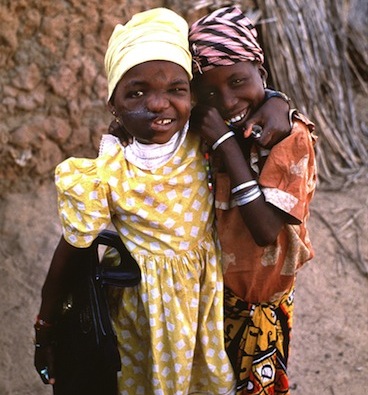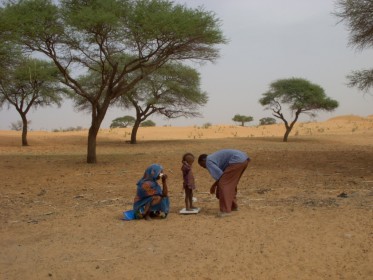- c/o Winds of Hope Foundation, Ch. de Montolivet 19, 1006 Lausanne, Suisse
- +41 (0)21 320 77 22
- info@nonoma.org
« It seems unthinkable to allow these children to carry on living in this state of mutilation, when we have the means of repairing the damage, if only partially...» Denys Montandon, Leprosy and noma surgeon (Extract translated from Médecine et Hygiène, 49: 2532-2536, 1991)
Initial treatment

Noma is not an inevitable fate, but it remains a little-known disease. The best ways of preventing it are good nutrition adapted to the requirements of young children, and good oral hygiene (which makes it possible in particular to avoid gum ulcers and especially the ulcero-necrotic gingivitis that leads to noma). That is why it remains essential to inform at-risk populations about ways of preventing and detecting the first symptoms, and the need for an affected child to receive treatment as a matter of urgency.
When the disease is detected in time, topical forms of treatment (disinfectant mouthwashes, antiseptics etc.) accompanied by antibiotic therapy are enough to stop it in one or two weeks. This initial treatment must then be reinforced by nutritional therapy (food and vitamin supplements) and rehydration.
If diagnosed in time and actively treated during the initial phase, many children with noma could be cared for and cured without having to suffer the disastrous sequelae.
Obstacles to initial treatment
On-the-spot treatment of “initial stage” noma cases frequently comes up against insurmountable problem :
- The extent of medical treatment available is closely linked to the state of the national economy
- Children affected are all from very disadvantaged social backgrounds, unable to obtain the medicines needed for their treatment
- The public services designed to help them (notably hospital pharmacies) are often underfunded.
- Even when emergency treatment can be provided, there is still the question of how to provide on-going care the next day
- Nutritional rehabilitation, vital for the child’s recovery, is often unavailable, and here again hospitals are often unable to provide the balanced meals required by the child’s condition
- Hospitalization of children is itself difficult. The close-packed nature of hospital wards does not favor cohabitation between a children suffering from noma and other patients, given the degree of septicity and the foul odor still present in the acute stage.
Noma sequelae and plastic surgery
Facial reconstructive surgery is possible but it takes a long time, involving a series of expensive operations. Moreover, it can often be carried out only in countries far away from where the disease occurs. Therefore, prevention rather than restorative surgery should be the primary objective of health programs.
Restorative surgery can only be performed when the initial illness has been completely stabilized. Only a minority of children, some of whom are horrifically mutilated – unable to eat properly, their jaws locked together, and sometimes completely lacking a nose, lips, cheeks or even eyelids – will benefit from these operations.
This is not curative surgery, saving or prolonging lives, but rather rehabilitation surgery. In many cases, it can help to preserve a patient’s vision, give him the opportunity to use his hands again, and in other cases make him look more like a human being again.

Obstacles to plastic surgery
Here too, numerous obstacles remain :
- No operation can be carried out with a general anesthetic,
- All reconstruction work has to be carried out in the more or less septic environment surrounding the mouth, nose and maxillary sinuses,
- You cannot rely on a small child to collaborate actively with exercises in opening the mouth,
- Reconstructions require the combination of a series of delicate surgical techniques: bone transplants ; skin and mucous tissue transplants; skin, muscle, and musculocutaneous flaps, as well as free flaps, by microsurgery, etc.
- When carried out on children, these procedures don not necessarily keep pace with facial growth. So further surgery might be necessary in adulthood.



